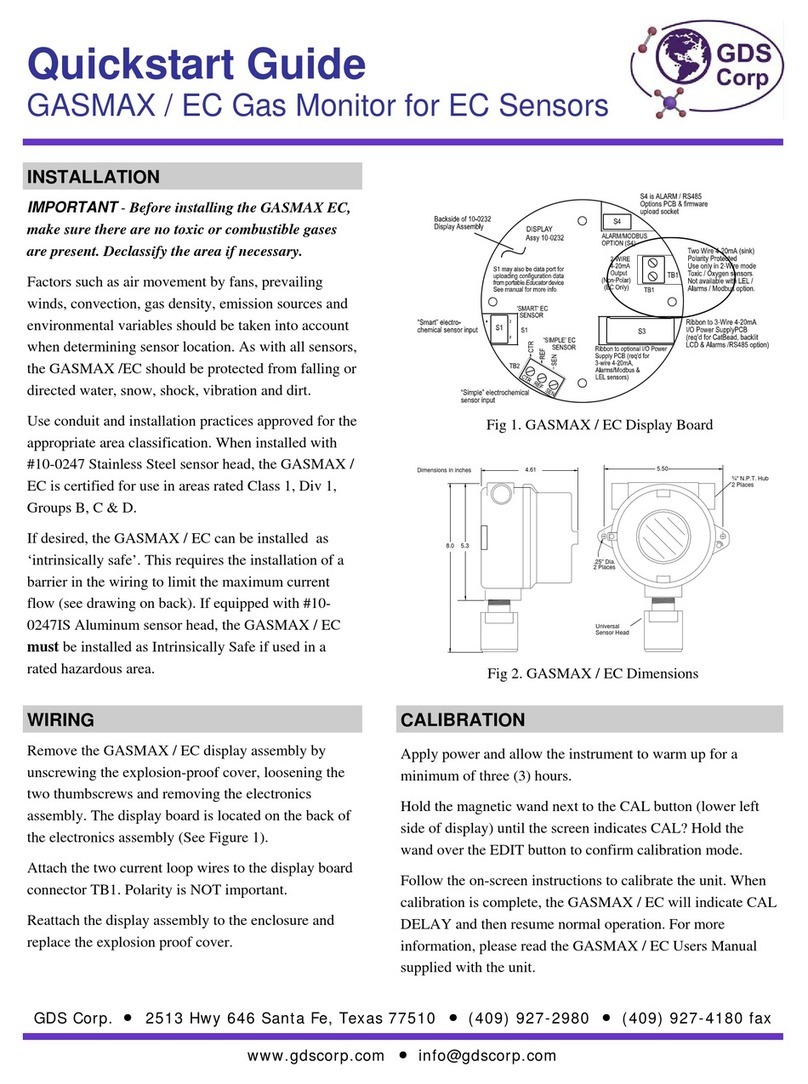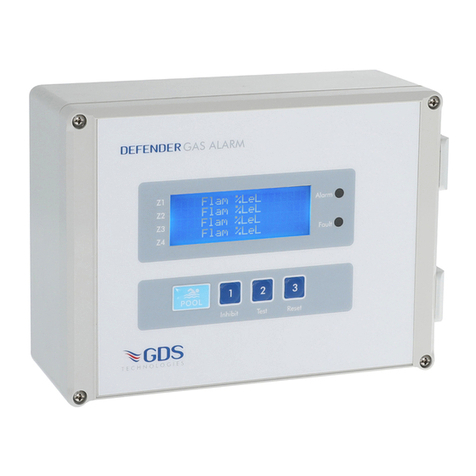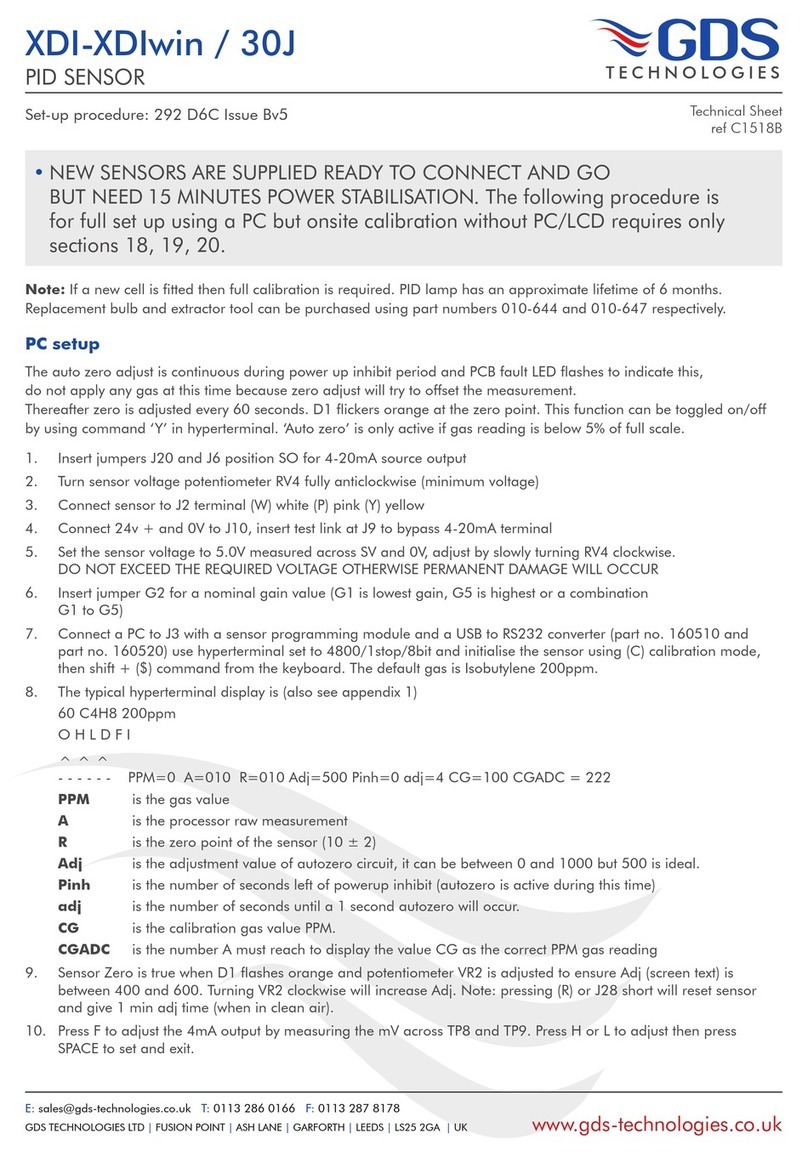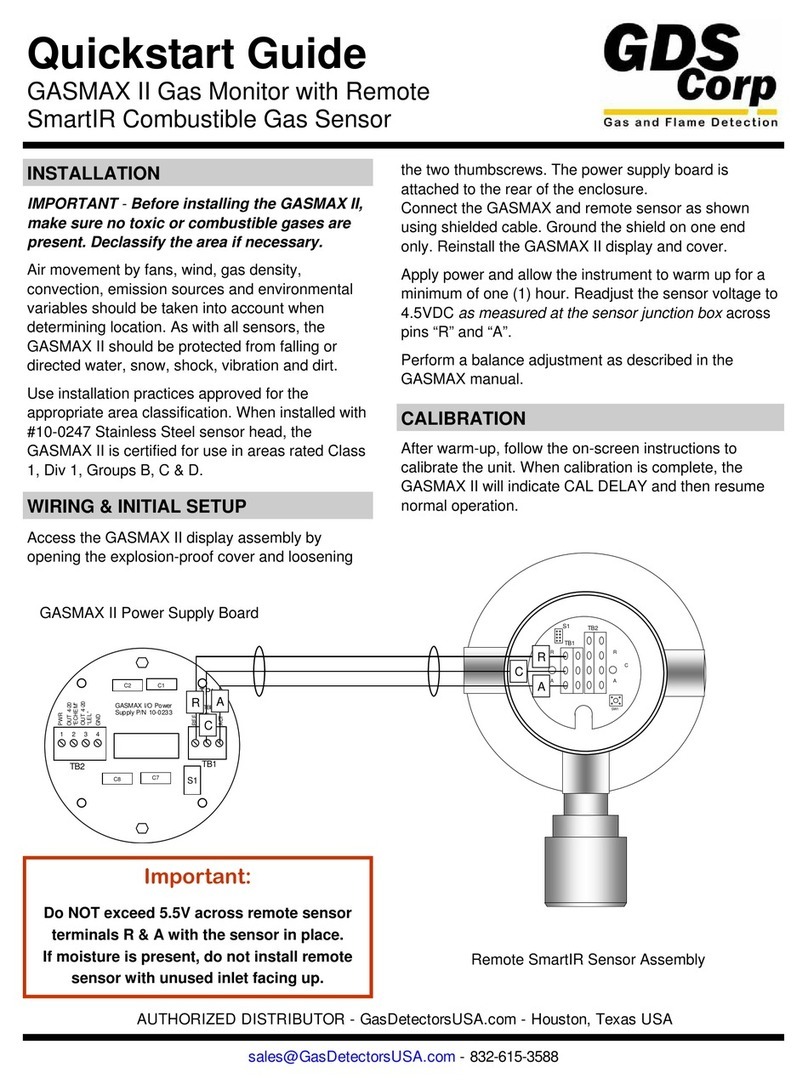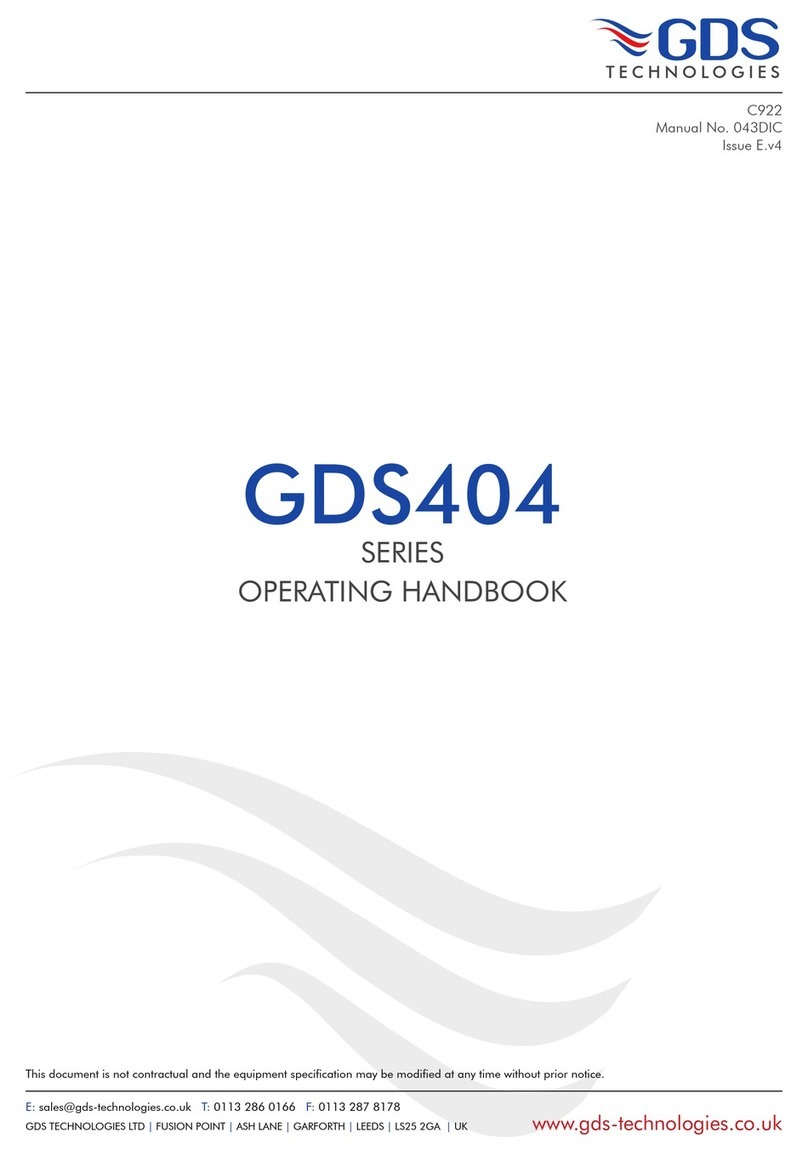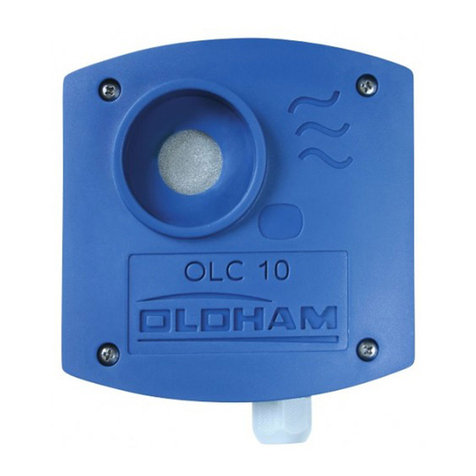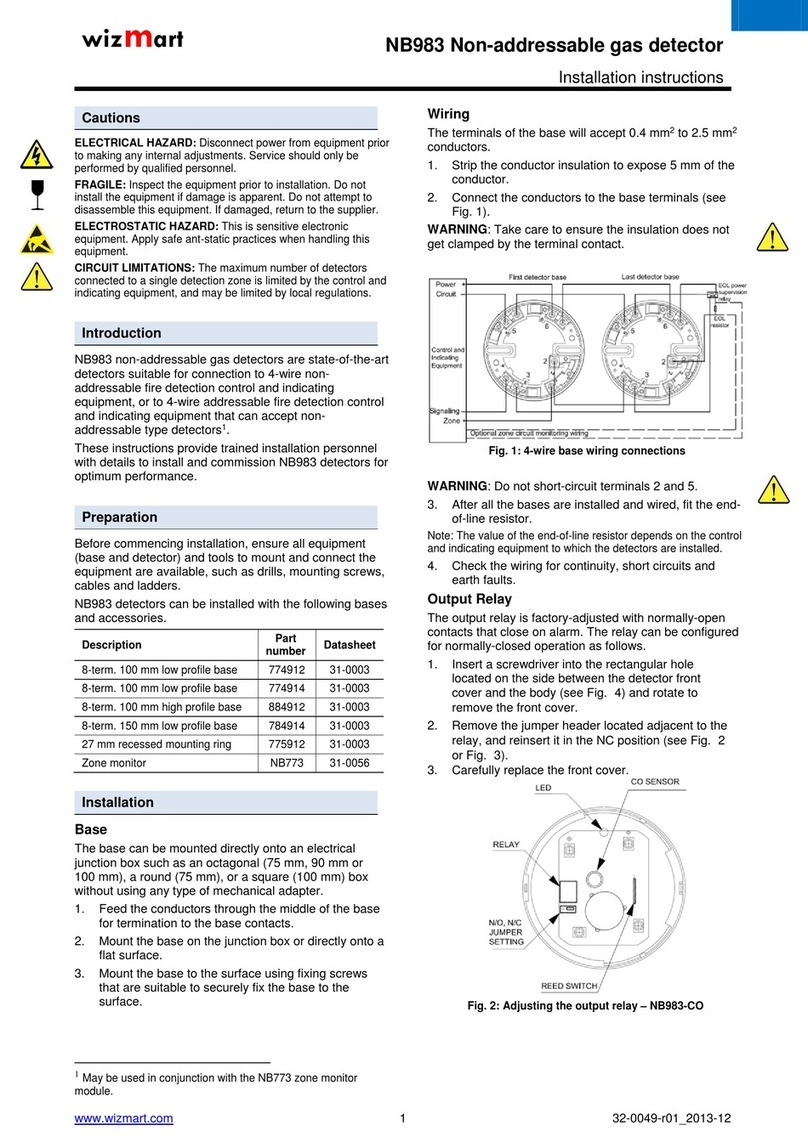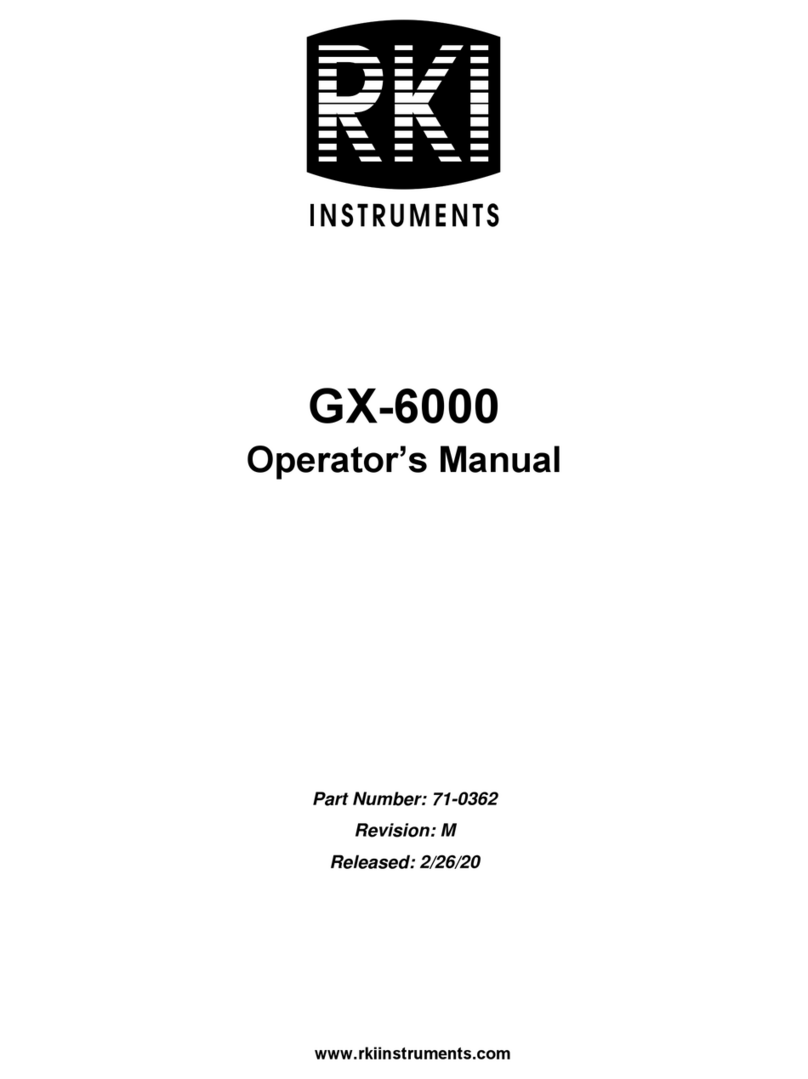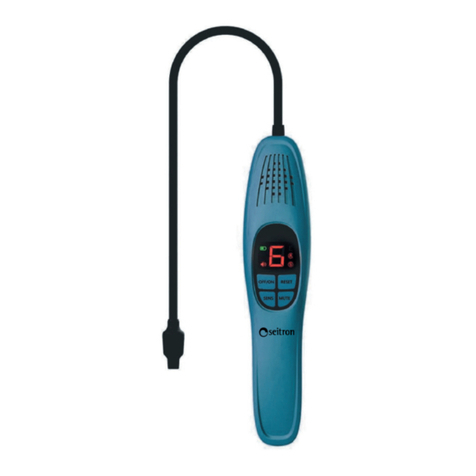
TECHNOLOGIES
GDS Defender – Sensor
FLAMMABLE / TOXIC / OXYGEN / REFRIGERANT GAS ALARM
Not for use in potentially explosive atmospheres (zoned areas) Technical Sheet
ref C1714
Operation
The gas sensor continuously monitors the atmosphere for any hazardous gas conditions, on detection of gas the
sensor will indicate the level status by red LED indication and sounder.
LOW alarm (A1), the green indicator will change to slow flashing red and repeat ON/OFF sounder.
An increasing level of gas will cause the HIGH alarm (A2) to activate which is indicated by rapid flashing of the
red alarm indicator, and corresponding increase in sounder rate. Should the over range DANGER alarm (A3) be
reached, the red alarm indicator and sounder will go constant.
Pressing the reset will mute the sounder and only reset the alarm condition once the gas has cleared. Unit Fault is
indicated by the indication LED turning AMBER with a very slow repeat ON/OFF sounder. Alarm Relay Operation
will activate end user selected controls or alarms, details of which should be recorded and kept adjacent to the
alarm unit.
All sensors are supplied gas tested with preset alarm
levels, ready to install and operate.The alarm unit should be
mounted in a position which is accessible, away from direct
heat, in the field of vision and in accordance with the units IP
Rating. Mains supply should be from a 1A fused spur.
SITING THE SENSOR (DETECTOR)
A key feature of the installation is the correct siting of detectors.
Several considerations must be taken into account, the most
important being the density of the gas with respect to air.
HEAVIER THAN AIR GASES (LPG, Propane, Butane,
Refrigerant Gases) – locate at 15 to 20cm above floor level.
LIGHTER THAN AIR GASES (Methane, Natural Gas, Town
Gas) - locate at 5 to 10cm from the ceiling.
EQUAL TO AIR GASES (Carbon Monoxide, Oxygen) - locate
at 1.5 metres above floor level.
Under still air conditions, a ‘lighter than air’ gas such as
methane leaking from a small orifice at ground level, will rise in
a plume the shape of which approximates an inverted cone. As
the gas rises, it draws air from the surroundings and creates a
turbulence. Resulting from this there occurs rapid dilution and,
unless a sensor is positioned within the plume, there will be no
initial indication of a leak.
As gas continues to escape, the diluted concentration rises
to ceiling level and begins to layer. In time the concentration
at ceiling level will increase and this, in turn, will displace air
downwards.
Dangerous levels will, therefore, tend to occur at ceiling level
and the thickness of this layer will increase with the passage of
time.
Ventilation of the room will of course alter the situation
significantly but it should be remembered that if the ventilator
is not at ceiling level, a dangerous concentration can still occur
between the top of the ventilator and the ceiling.
For heavier than air gases such as propane or butane, the
formation of dangerous layers occurs at ground level. These
gases tend to behave like water and will run down gradients
and pool at the lowest point.
The number of sensors required in individual rooms is
determined by the number of possible hazards in the vicinity.
Gas leakage may occur around valves, flanges and anywhere
where gas pipes are jointed. It may be possible to cover several
probable gas leaks in one room by the careful siting of a single
detector. Ducts, trenches and manholes are also likely places
where a build up of heavy gases may collect.
When siting a detector in such places it is most important
to ensure that there is no likelihood of flooding by water, or
excessive dust which may block the sensor mesh element and
prevent gas reaching the sensor.
When monitoring gases outside, those lighter than air will
be quickly dispersed, but gases heavier than air will tend to
form in layers and again causing a dangerous hazard. When
siting detectors outside prevailing winds must be taken into
consideration and adequate protection given against wind and
rain.
POISONING OF CATALYTIC SENSORS
Catalytic elements used in most flammable gas sensors are
liable to be rendered inactive due to ‘poisoning’ by certain
groups of compounds.
In general contact with any gaseous compound capable of
producing an involatile residue upon heating is to be avoided.
Examples of such substances are:
a. Silicon containing vapours, as emitted by silicone polishes,
greases and oils.
b. Petroleum vapours containing tetra-ethyl lead or other
organo-metallic compounds.
Switching ON
Having fully installed the unit switch ON the power from the
fused spur. During the one minute stabilising period the green
LED indicator will flash going constant on warm up completion.
Control or warning devices which have been connected to the
alarm relays should be tested for correct operation.
Unit Test
The unit may be electrically tested by pressing the reset button
for 15 seconds. The LED indicator will flash RED and the
sounder will toggle ON/OFF, alarm relays will activate at which
time attached warning devices or valves should be checked for
correct operation.
Gas Test: To ensure that the sensor responds correctly to the
presence of gas it should be exposed to test gas at six-monthly
intervals. For further details please contact your product
supplier.
Installation - By approved electrical installer






